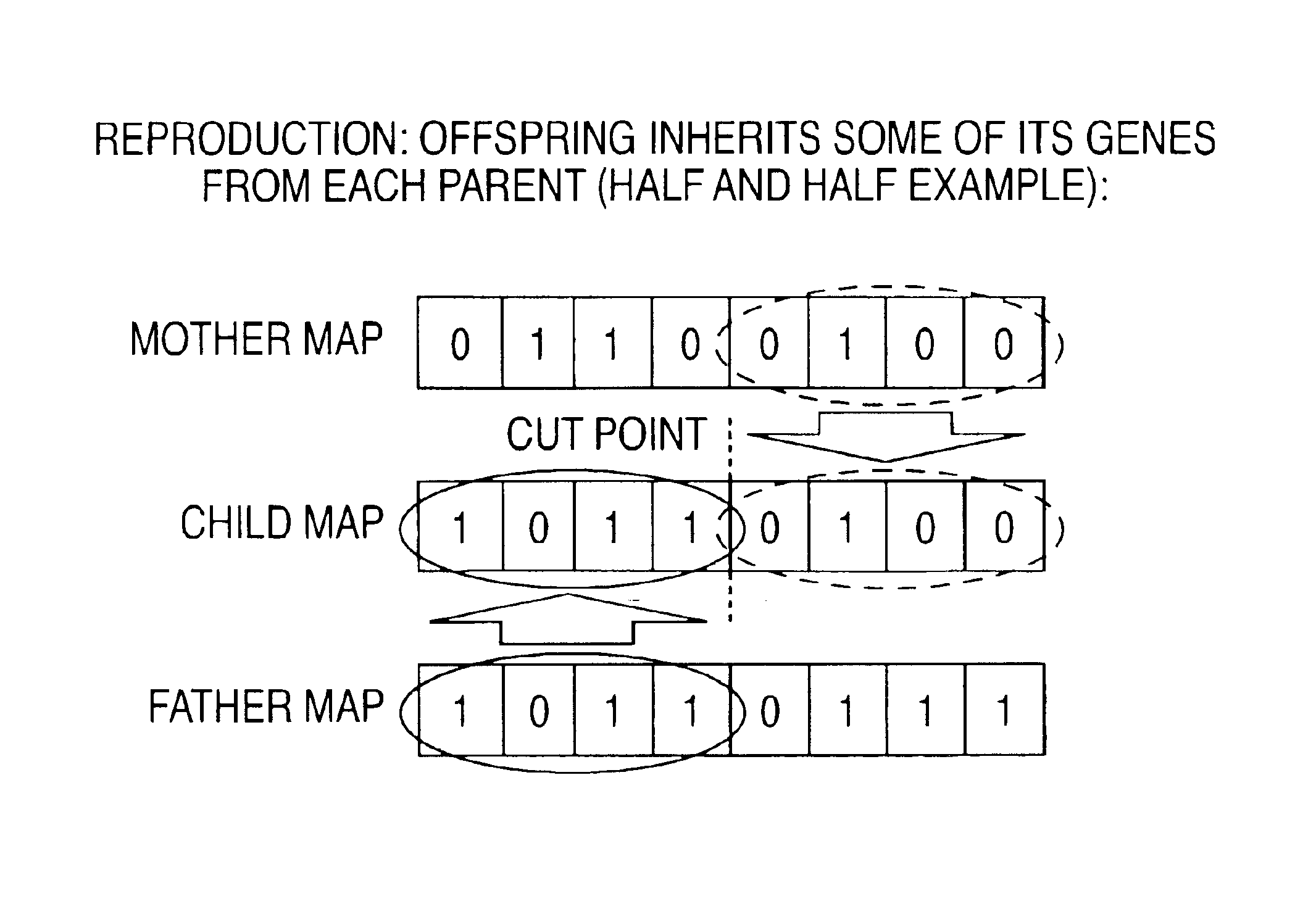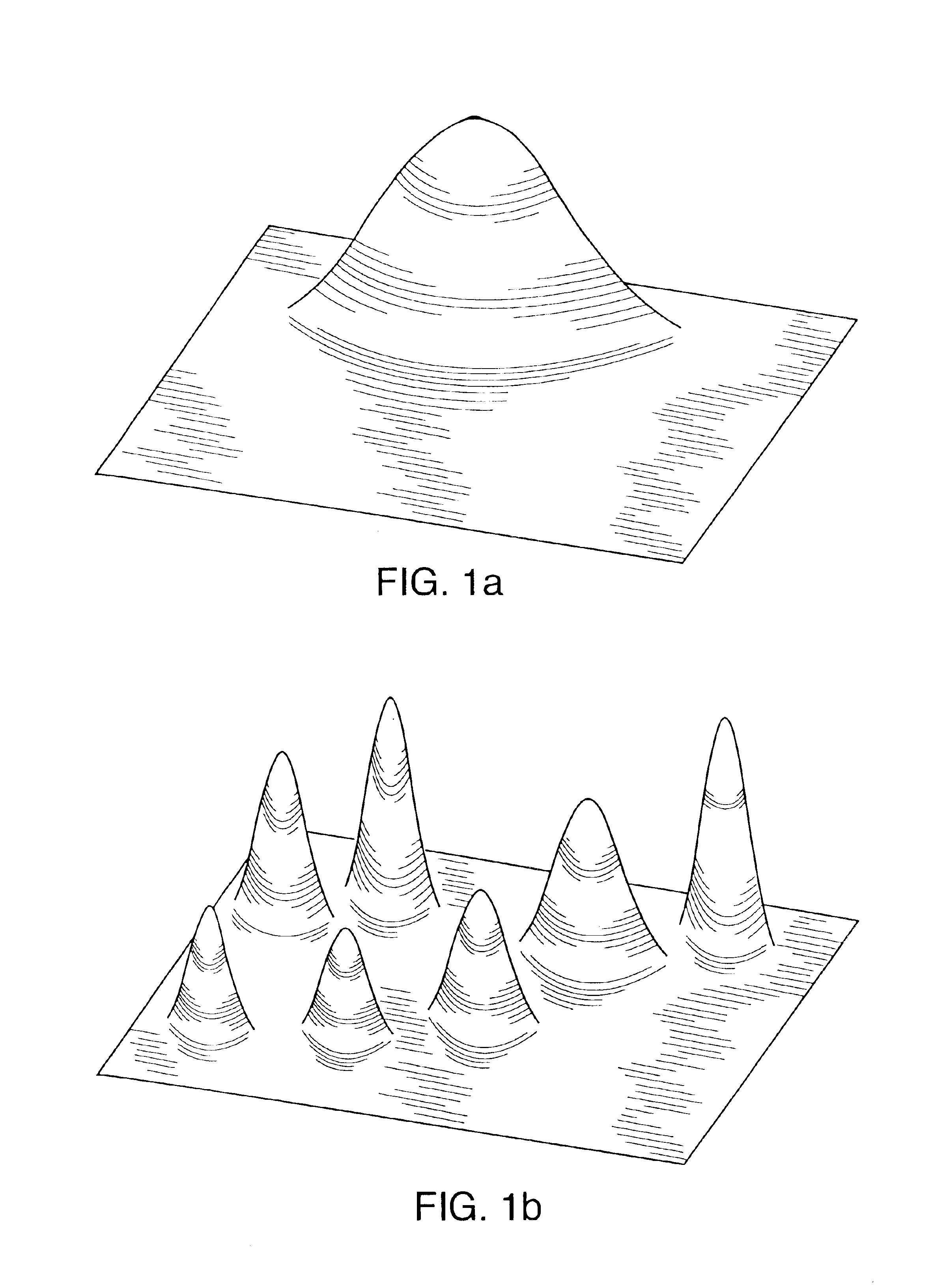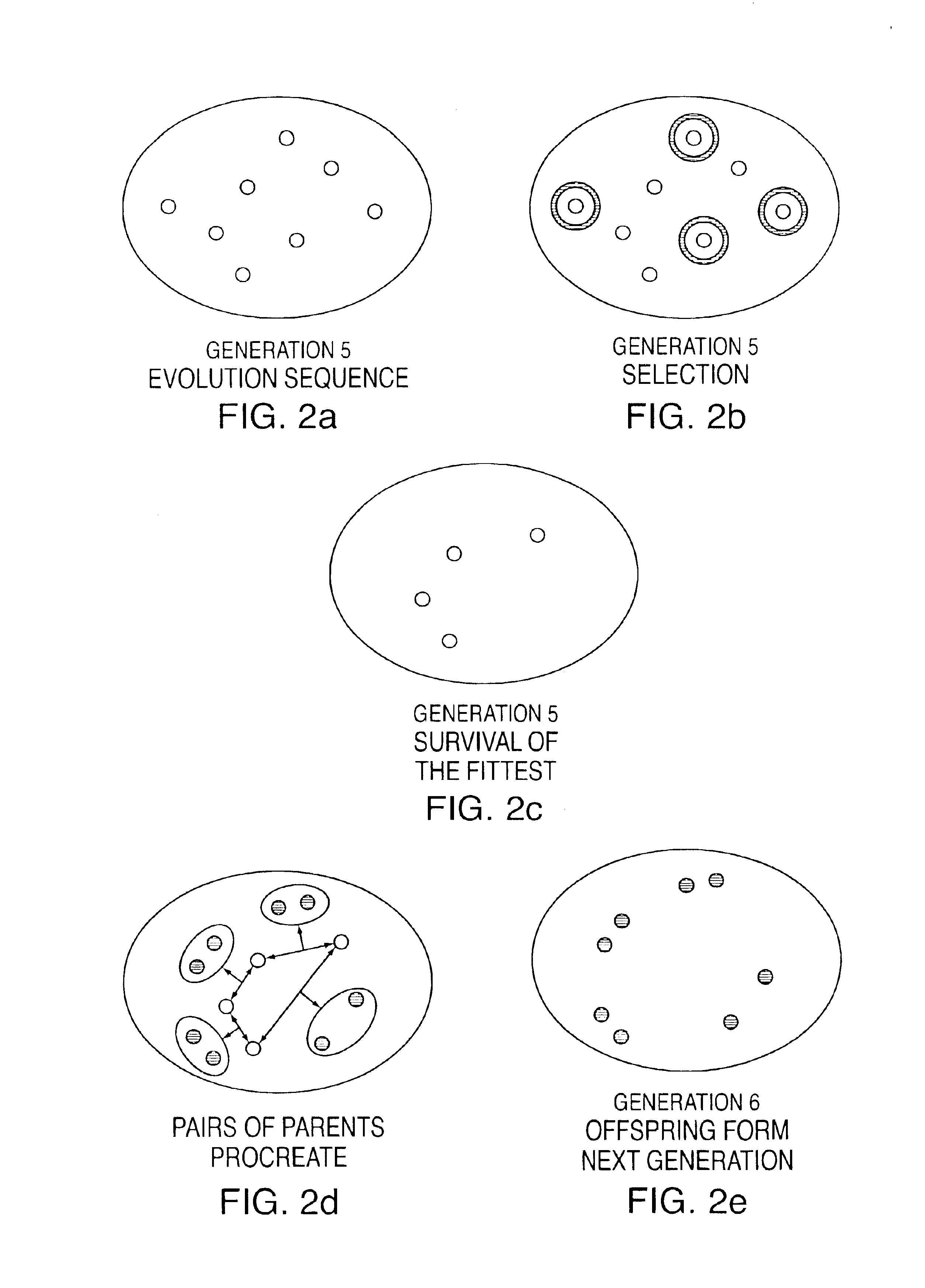Cochlear implant MAP optimization with use of a genetic algorithm
a technology of genetic algorithm and cochlear implant, which is applied in the field of cochlear implant map optimization with use of genetic algorithm, can solve the problems of not being able to identify an optimal map, not being able to try all of the alternatives, and not being able to provide an optimal outcome for all users
- Summary
- Abstract
- Description
- Claims
- Application Information
AI Technical Summary
Benefits of technology
Problems solved by technology
Method used
Image
Examples
Embodiment Construction
There will first be described some of the terms used in connection with genetic algorithms and, in some cases, how these terms are applied to genetic algorithms for fitting cochlear implants in accordance with the invention.
An ‘organism’ is entirely defined by a set of Nb ‘genes’ (bits). The number of possible unique organisms is 2Nb. In the invention, the organism to be optimized is a cochlear MAP (values for a set of parameters). In the example of FIG. 3A, Nb is 8 so a MAP is defined by a gene set of 8 bits, and there are 256 possible MAPs. Three of the bits are used to select 1 of 8 stimulus rates (the rate, in Hz or pulses / second, at which high-energy channels are selected and stimulus pulses are delivered to groups of N electrodes), three bits select 1 of 8 spectral maxima counts (the number N of electrodes periodically selected to be stimulated, representing the N frequency bands with the highest energy at the time), and the remaining two bits select 1 of 4 channel counts (the...
PUM
 Login to View More
Login to View More Abstract
Description
Claims
Application Information
 Login to View More
Login to View More - R&D
- Intellectual Property
- Life Sciences
- Materials
- Tech Scout
- Unparalleled Data Quality
- Higher Quality Content
- 60% Fewer Hallucinations
Browse by: Latest US Patents, China's latest patents, Technical Efficacy Thesaurus, Application Domain, Technology Topic, Popular Technical Reports.
© 2025 PatSnap. All rights reserved.Legal|Privacy policy|Modern Slavery Act Transparency Statement|Sitemap|About US| Contact US: help@patsnap.com



